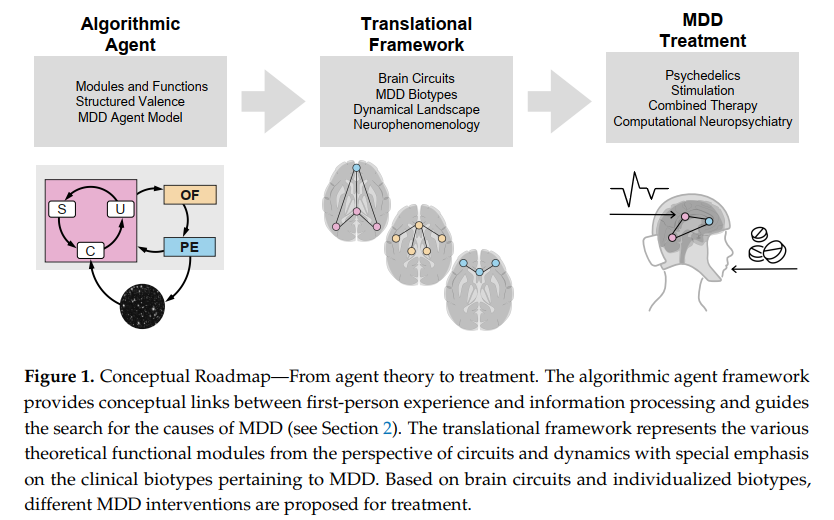Figure 1 presents a conceptual roadmap linking the algorithmic agent framework with the translational framework for understanding and treating Major Depressive Disorder (MDD). It outlines the integration of theoretical agent components (e.g., Modeling Engine, Objective Function, Planning Engine) with brain circuits, functional networks, and biotype-driven interventions.

That said, this diagram raises a conceptual ambiguity worth discussing. The modular structure of the agent, while useful for organizing complex processes, may not adequately capture the non-linear, overlapping, and multiscale nature of brain function. For instance, emotional evaluation, planning, and memory are all known to rely on shared and dynamically interacting networks, such as the prefrontal cortex, default mode network, and limbic systems. By separating these into discrete modules, there is a risk of overlooking how these processes co-emerge through system-level dynamics, rather than operating in isolation.
This brings up an open question: Could a more integrative, systems-level approach, perhaps using dynamic causal modeling or graph-based whole-brain simulations, offer a better framework to capture the interactions between agent modules and their neurobiological substrates?
Moreover, given the field’s shift toward network-based psychiatry, it might be beneficial to frame these agent components not just as modules but as dynamically coupled processes, co-regulated across brain networks. This might help prevent the unintentional impression that there is a one-to-one mapping between agent theory and brain anatomy.


You rightly highlight the risk of reification; that is, the inadvertent treatment of abstract constructs as concrete anatomical entities, which is a well-recognized challenge in computational psychiatry. The intent of this model is not to imply strict anatomical correspondence, but rather to support hypothesis generation and enable stratification strategies for understanding biotypes of major depressive disorder (MDD), particularly through the integration of functional networks, neural circuits, and clinical features.
In response to your question: yes, empirical investigations have begun to examine the relationship between computational constructs and neural circuits. These studies provide preliminary support for aligning certain functional networks with agent-like modules, such as the Default Mode Network with self-referential modeling processes and reward-related circuits with value-based decision-making. Moreover, computational phenotyping approaches are increasingly demonstrating translational relevance, particularly in predicting treatment responses when integrated with high-resolution imaging and clinical data.
Nevertheless, I fully concur that more data-driven and dynamic modeling frameworks are essential. Approaches that incorporate whole-brain dynamical systems, Bayesian inference, and neurocomputational simulations are crucial for validating and refining these mappings in clinical populations.